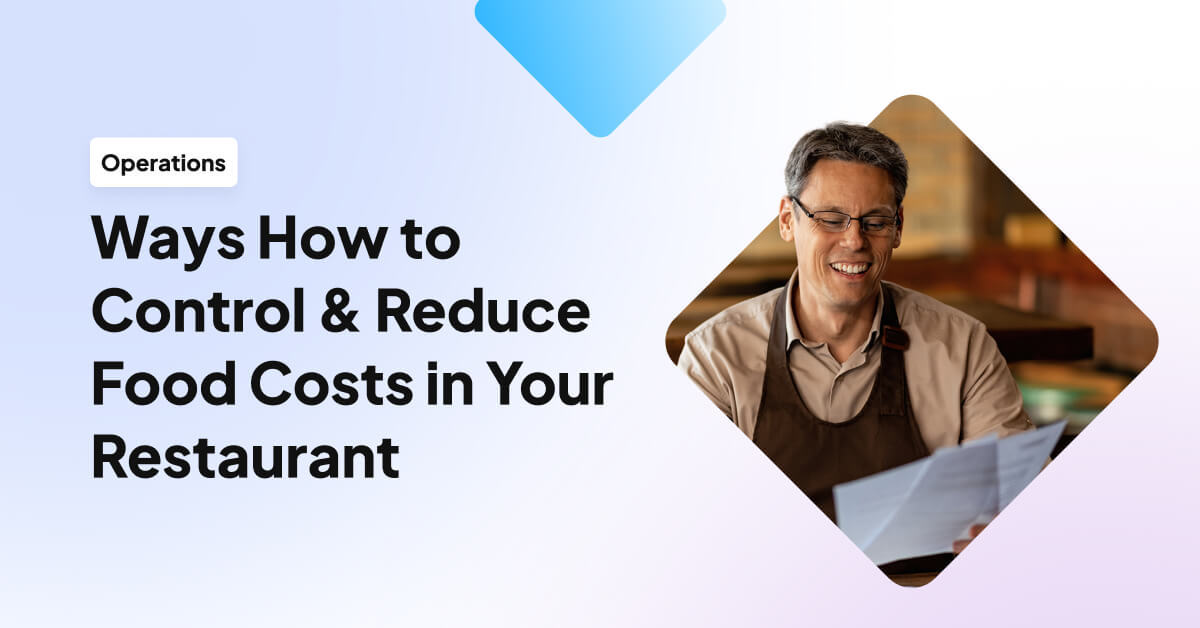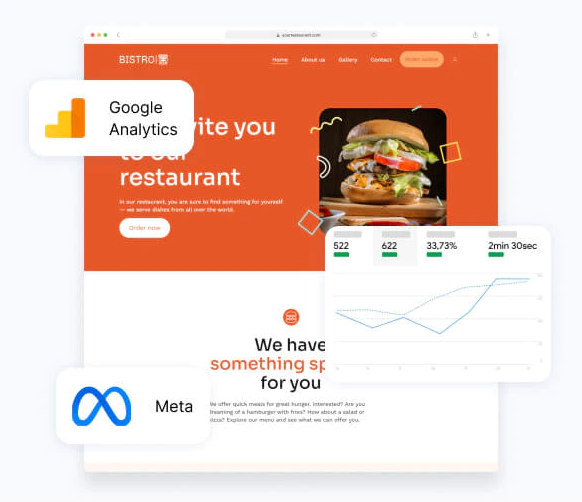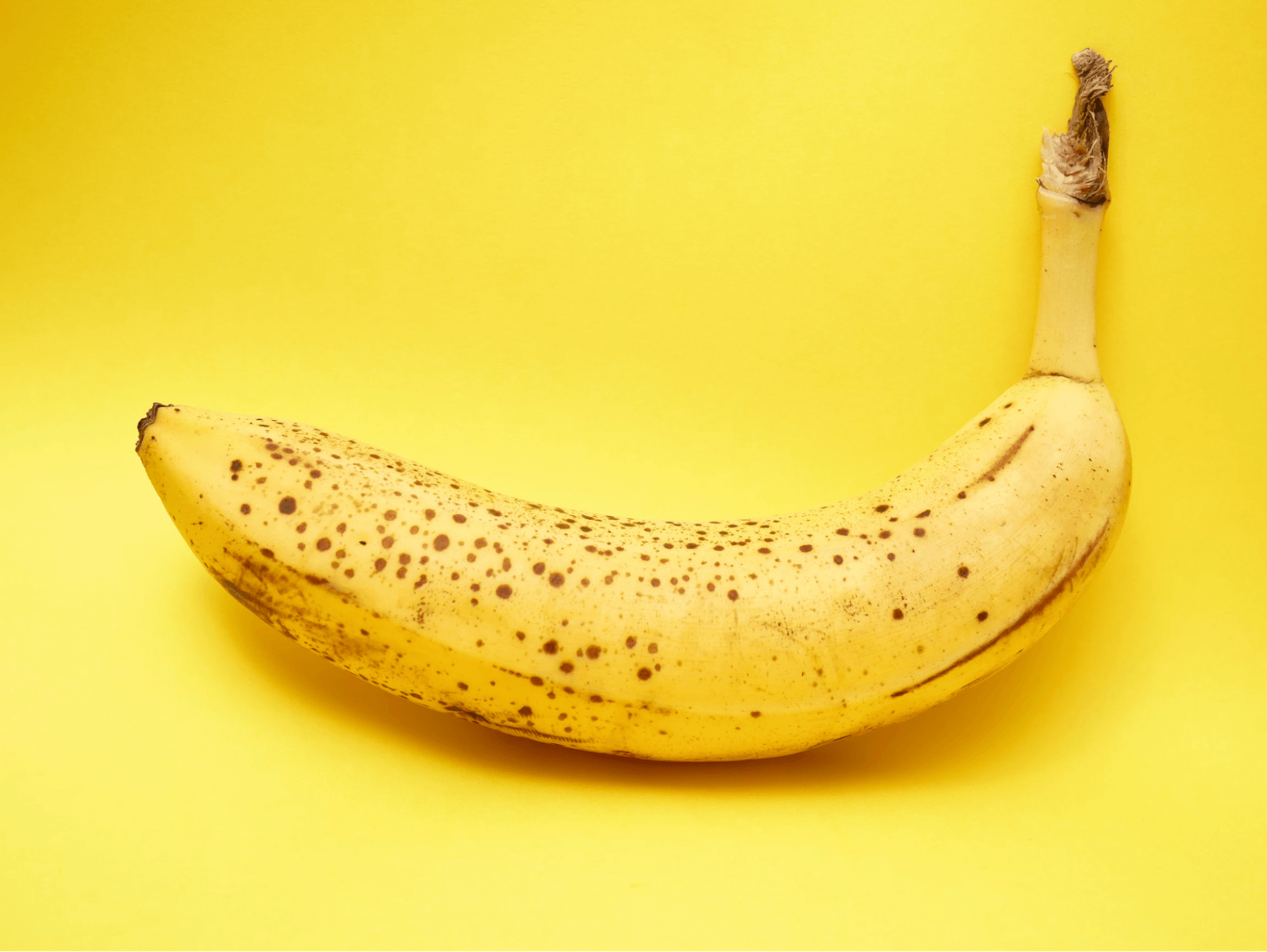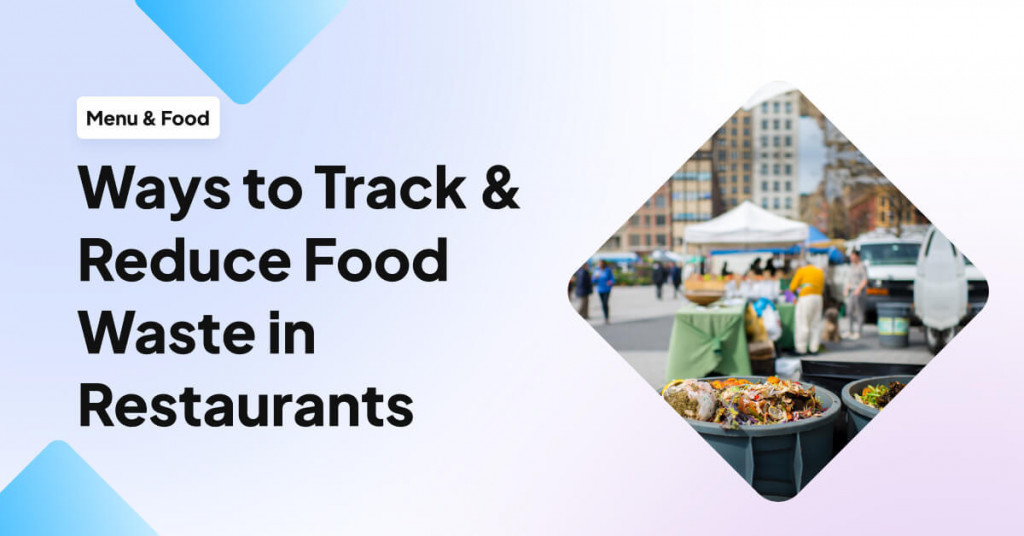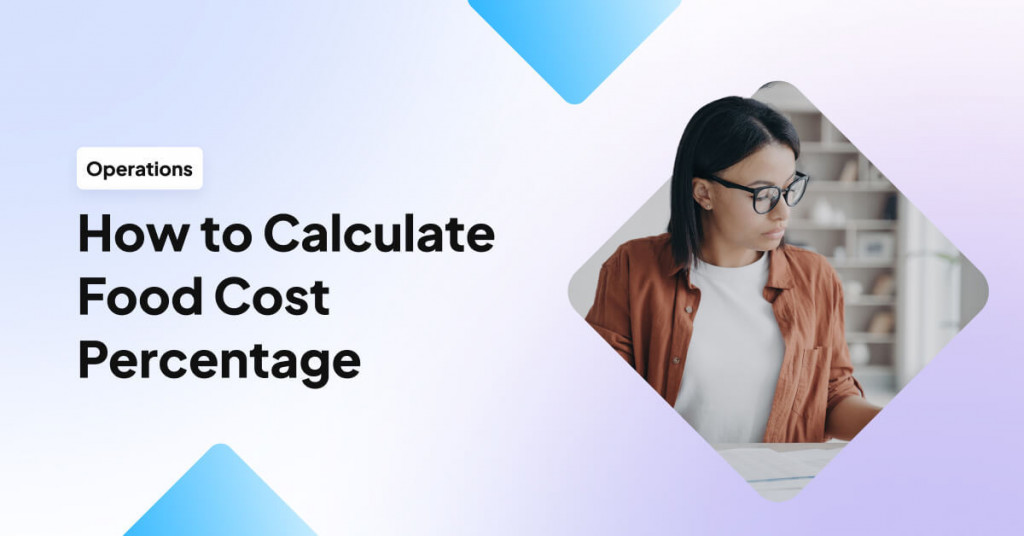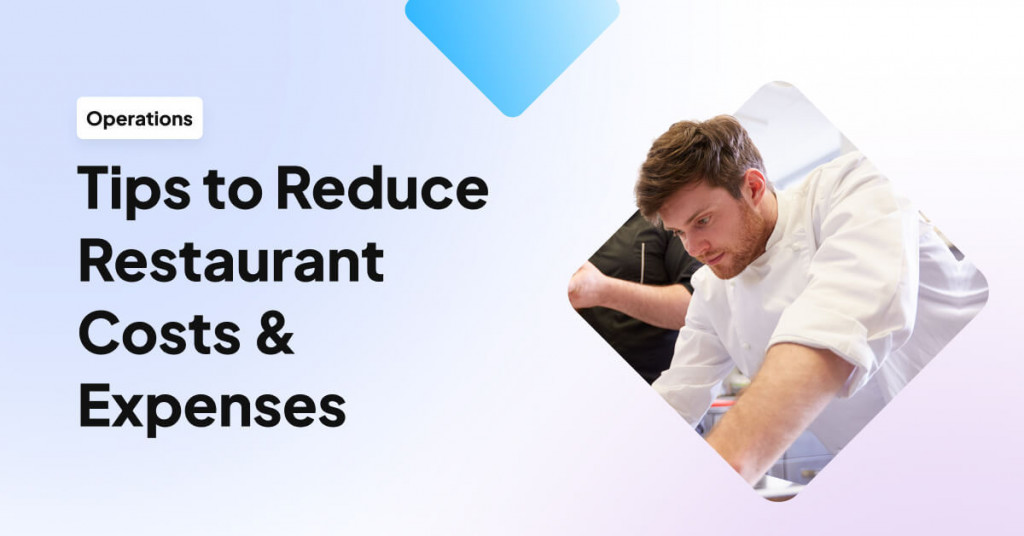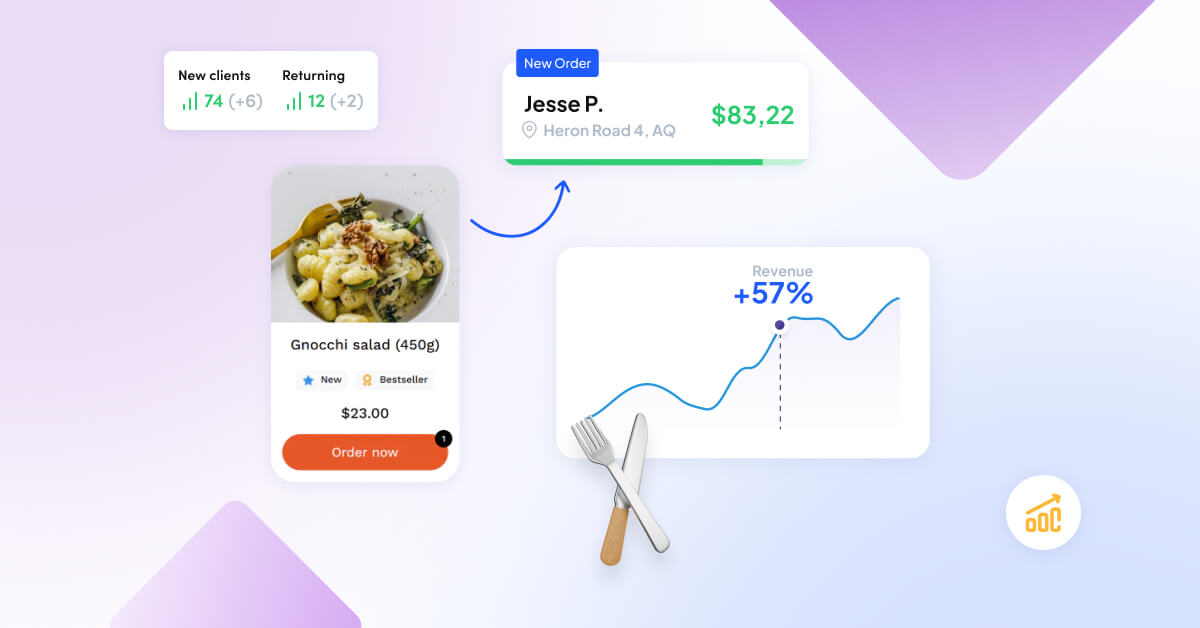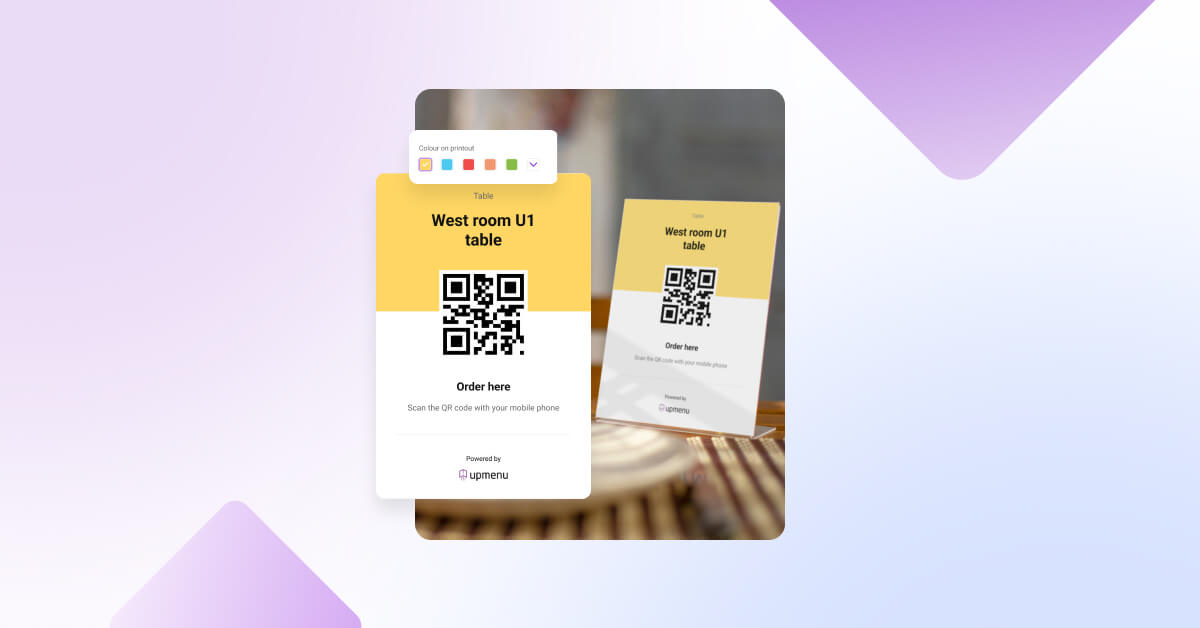To run a profitable restaurant, you have to manage food costs skillfully. The aim is to introduce effective control and reduction of expenses without compromising on the quality of meals. This guide provides strategies and knowledge you need to find the ideal food-cost balance. We’re going to explore:
- What makes up your restaurant food costs?
- How important is managing your food costs?
- What is your ideal food cost percentage?
- Food cost vs. Prime cost
- How to track and control food cost?
- How to reduce food waste for profit?
- How to negotiate better prices with restaurant food suppliers?
- How to maximize the cost-effectiveness of your restaurant’s menu
- How to implement food cost controls & train your staff
The first part of the article is educational and was made to help you better understand and control food costs. Feel free to skip this part if you’re already familiar with how to calculate food costs.
What Makes Up Your Restaurant Food Cost?
At first glance, restaurant food cost may seem straightforward – the total cost of the food you serve. However, it’s a bit more complex than that. To understand and manage food costs, it’s crucial to distinguish between two types:
Period Cost
Period cost refers to the total food expenses incurred over a specific time frame, whether it’s a week, a month, or a year. Calculating period cost involves using the Cost of Goods Sold (restaurant COGS) ratio.
The ratio is calculated by dividing the cost of ingredients by the total money earned from selling food. Please see the example below.
COGS Ratio Example:
Imagine your restaurant spent $4,000 on ingredients and earned $10,000 from food sales in a month. Your COGS ratio would be 40%. This means you used 40% of your sales revenue to cover ingredient costs. Lower ratios indicate better cost control and higher profits.
Plate Cost
Plate cost, on the other hand, represents the total expenses associated with preparing a single dish before profit margins are factored in. The plate cost is obtained by summing the portion costs for each ingredient in a dish.
Imagine you run a restaurant, and you want to calculate the plate cost for your signature dish, “Spaghetti Bolognese.” To do this, you need to consider the cost of all the ingredients used in making one serving of this dish:
- Ground beef: $2
- Pasta: $1
- Tomato sauce: $0.75
- Onion, garlic, and spices: $0.50
- Parmesan cheese: $0.25
Now, add up the costs of all these ingredients:
Plate Cost = $2 (beef) + $1 (pasta) + $0.75 (sauce) + $0.50 (onion, garlic, spices) + $0.25 (cheese) = $4.50
What Is Your Restaurant Food Cost Percentage?
Most restaurateurs express food costs not in raw numbers but as a percentage of total sales. This percentage is known as the restaurant’s food cost percentage, and it plays a crucial role in gauging financial performance.
The food cost percentage can be calculated in two ways:
- By dividing the total costs for a specific period by the total sales for the same period (period cost).
- By dividing the cost price of a menu item by its sales price (plate cost), then multiplying the ratio by 100.
Let’s say your total food costs for September amounted to $6,000. During that same month, your restaurant generated $20,000 in total food sales.
To calculate your food cost percentage:
Food Cost Percentage = (Total Food Costs / Total Food Sales) * 100
Food Cost Percentage = ($6,000 / $20,000) * 100 Food Cost Percentage = 30%
In this example, your food cost percentage is 30%. This means that for every dollar you earned from selling food, you spent 30 cents on the cost of the ingredients used to make those dishes.
Food Cost vs. Prime Cost
While food and prime costs are related, they are not the same. Food costs serve as a component in calculating prime costs, which encompass both the Cost of Goods Sold (COGS) and labor expenses over a given period.
Restaurant Prime Cost
Your restaurant’s prime costs include ingredients, beverages, and paper goods, along with salaries, wages, taxes, and employee benefits.
In a nutshell, prime cost is the sum of what it costs to create or purchase what a business sells (COGS) and the cost of labor to make or provide those products or services.
Imagine you own a restaurant, and you want to calculate your prime cost for the month of May.
- Cost of Goods Sold (COGS): In May, your restaurant spent $5,000 on ingredients (such as food, beverages, and condiments) used to prepare meals.
- Labor Costs: That month, your restaurant had total labor costs of $7,000, which includes salaries, wages, payroll taxes, and benefits for your kitchen and front-of-house staff.
Now, let’s calculate your prime cost:
Prime Cost = Cost of Goods Sold (COGS) + Labor Costs Prime Cost
Prime Cost = $5,000 (COGS) + $7,000 (Labor Costs) = $12,000
Your prime cost for the month of May is $12,000. This means that it cost your restaurant $12,000 to purchase the ingredients and pay the labor needed to prepare and serve the meals during that month.
What Is Food Cost?
Food cost represents the total cost incurred by a restaurant to purchase the ingredients and materials. In other words, it’s the cost of all the food-related expenses that go into creating the dishes you serve.
Food Cost includes the expenses for:
- Ingredients: The cost of all the raw food ingredients, such as meat, vegetables, grains, and spices.
- Beverages: The cost of beverages served, including non-alcoholic drinks.
- Condiments and supplies: The cost of condiments, napkins, utensils, and any other items that accompany the meal.
- Waste and spillage: Food that goes to waste, is spoiled, or is damaged during preparation or service.
Here’s how to calculate food cost:
Suppose your restaurant incurred the following expenses in a given month:
- Cost of ingredients: $3,000
- Cost of beverages: $500
- Cost of supplies: $200
- Waste and spillage: $100
To calculate the Food Cost, you add up all these expenses:
Food Cost = Cost of Ingredients + Cost of Beverages + Cost of Supplies + Waste and Spillage Food Cost = $3,000 + $500 + $200 + $100 = $3,800
In this example, your food cost for the month is $3,800. This is the actual dollar amount spent on food-related expenses during that month.
In summary, food cost only considers the cost of ingredients and materials used to prepare dishes. Prime cost gives a broader view of a restaurant’s cash flow, including labor, representing the total expense of running a restaurant.
6 Steps to Control & Reduce Food Costs in Your Restaurant
Now that you understand the basics of calculating food costs, it’s time to focus on practical ways of reducing the actual food cost and maximizing the profit margin without raising the food prices.
1. Track Your Expenses to Understand Actual Food Costs
This might seem like a no-brainer, however, keeping a solid track of all the restaurant’s expenses and revenues can get really tricky. Especially if you’re doing all of the accounting yourself on top of running the business.
The first step to keeping track of all restaurant operations is to invest in a solid restaurant analytics system.
Having a high-quality system is the simplest way of keeping your finances, including restaurant payment processing, in order. This should be the primary goal before introducing further restaurant food cost control methods.
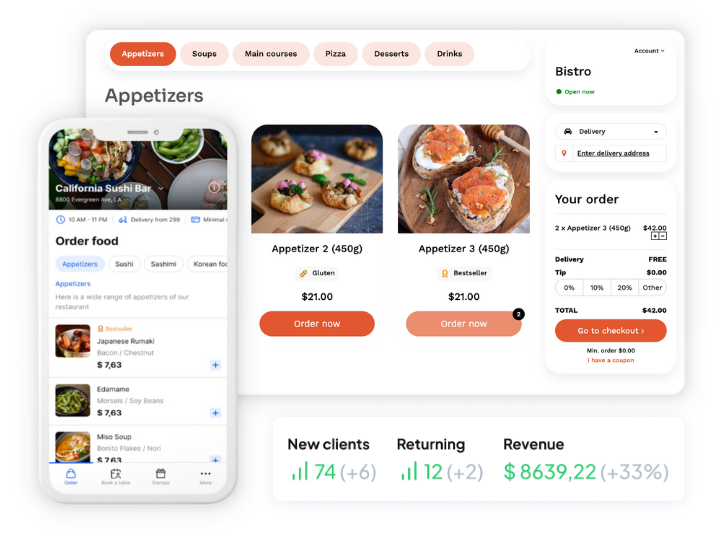
2. Reduce Food Waste in the Kitchen
Reducing food waste in a restaurant is not only environmentally responsible but also financially savvy. Here are some practical tips to help you minimize food waste in your restaurant:
- Menu engineering: Analyze menu item popularity and profitability to eliminate underperforming dishes that contribute to waste. Use a digital restaurant menu to change prices and test them in real-time.
- Inventory management: Implement a first-in, first-out (FIFO) system to use older ingredients first and prevent spoilage.
- Employee training: Educate staff about the importance of waste reduction and involve them in waste-saving initiatives.
- Donations: Partner with local food banks or charities to donate surplus food instead of discarding it.
- Smart purchasing: Order ingredients in quantities that match your restaurant’s needs to minimize excess inventory.
- Reduced portion options: Offer smaller portion sizes for menu items, reducing the likelihood of leftovers.
- Regular inventory checks: Conduct daily or weekly inventory checks on items used frequently to avoid over-ordering.
- Standardized recipes: Develop standardized recipes to ensure consistency and minimize ingredient variability.
- Portion control: Train kitchen staff to portion ingredients accurately to reduce overproduction and plate waste.
By implementing these tips and fostering a culture of waste reduction in your restaurant, you can significantly reduce food waste, cut costs, and contribute to a more sustainable and responsible food service operation.
3. Negotiate Better Prices with Suppliers
Negotiating better prices with suppliers is a key strategy for reducing food costs in your restaurant. Like any other business, it’s worth having solid connections within the restaurant industry.
Here are some tips on how to effectively negotiate with suppliers and reduce the overall food cost:
- Strengthen supplier relationships: Cultivate strong bonds with your suppliers, emphasizing consistent communication and a mutually beneficial partnership. This collaboration can yield more favorable terms and pricing, ultimately helping you reduce food costs. Understand your supplier’s needs and challenges, working together to discover solutions benefiting both parties.
- Maximize volume purchases: Suppliers frequently offer discounts for larger orders, providing an avenue to save money and reduce food costs. Explore options like consolidating purchases or collaborating with fellow restaurants to achieve higher order volumes. This strategy can qualify you for bulk discounts, effectively lowering overall costs.
- Continuously negotiate: Regularly revisit your supplier contracts, actively seeking opportunities to enhance terms as your business evolves. Take a proactive stance in identifying avenues for cost savings, encompassing aspects such as lower prices, reduced delivery fees, or extended payment terms.
- Explore alternative sourcing: Don’t hesitate to investigate alternative suppliers or product sources. The competitive landscape among suppliers can work to your advantage, allowing you to compare vendor prices and secure better deals. Thoroughly evaluate various options to ensure optimal pricing and quality aligned with your specific requirements.
- Monitor supplier performance: Consistently evaluate your suppliers’ performance across key metrics, including product quality, reliability, delivery punctuality, and customer service. In instances where issues arise, address them promptly. Moreover, leverage these performance assessments as negotiation leverage to secure improved terms and further reduce food costs.
Use these 5 strategies to improve your negotiation skills, secure better pricing and terms with your suppliers, and improve cost management in your restaurant.
4. Change Your Menu to Eliminate Unprofitable Items
Staying flexible regarding your menu is one of the main challenges you’re going to face. There will be foods that sell insanely well, as well as those that just take up the space and force you to keep extra supplies in the kitchen.
There are a couple of steps you’re likely going to need to sort this out:
- Introduce digital menus: A digital restaurant menu will enable you to track the amount of meals sold, which is as clear as it gets in regard to your menu performance.
- Analyze menu performance using historical data: Start by analyzing the historical sales data, which is crucial for understanding how each menu item has performed in the past. Calculate the theoretical food cost and overall food percentage for each dish using the food cost formula. This analysis will help you pinpoint which items have contributed to higher food costs and low profitability.
- Recipe costing for precise evaluation: Implement recipe costing to accurately determine the cost of each menu item, including portion size and ingredient expenses. This step ensures a thorough evaluation of your menu items in terms of their profitability and contribution to reducing food costs.
- Identify unprofitable items and total cost sold: Based on your analysis and recipe costing, identify menu items with low sales or those that have high theoretical food costs relative to their selling prices. These items are prime candidates for removal or modification. Calculate the total cost of goods sold for these items to gauge their impact on overall food costs.
- Consider seasonal variations and portion size: Take into account seasonal variations in ingredient availability and customer preferences when deciding on menu changes. Adjust portion sizes to optimize cost efficiency while maintaining customer satisfaction. Smaller portion sizes can contribute to reducing food costs.
- Regular menu updates and ongoing evaluation: Menu optimization is an ongoing process. Regularly review and update your menu based on changing market trends and customer feedback.
Follow these steps and change your menu to eliminate unprofitable items, improve cost management, and maintain a menu that serves both your customers and your bottom line.
5. Implementing Food Cost Controls
Effectively managing food costs is a crucial aspect of running a successful restaurant. Restaurant owners must implement strategies to reduce food costs and enhance profitability. Here’s how to implement food cost controls in your restaurant:
- Assess your overall food cost percentage: Begin by analyzing your restaurant’s overall food cost percentage. This critical metric provides insight into the portion of your revenue allocated to food costs. To reduce food costs and enhance profitability, aim to lower this percentage while maintaining food quality.
- Prioritize restaurant inventory management: Effective restaurant inventory management is at the core of food cost control. Regularly monitor stock levels, track ingredient usage, and establish reorder points. Minimize waste and optimize purchasing to reduce food costs significantly.
- Streamline food prep processes: Review and streamline food prep processes in your kitchen. Ensure that portion control and standardized recipes are consistently followed. Efficient food prep practices can help lower food costs by minimizing ingredient wastage.
- Identify and eliminate costly practices: Identify and eliminate costly practices or habits within your restaurant that contribute to higher food costs. This could include overproduction, improper storage, or inefficient use of ingredients.
- Implement cost-conscious menu adjustments: Work with your culinary team to make menu adjustments that are cost-conscious. This may involve reevaluating ingredient choices, portion sizes, or pricing strategies. Ensure that menu changes align with your goal to reduce food costs while maintaining customer satisfaction.
These food cost controls can help you manage costs, optimize inventory management, and achieve a lower overall food cost percentage.
6. Training Your Staff
Training your staff is one of the final steps to taking control of your restaurant’s food costs. Here are a couple of steps you can take to make sure your staff is doing their best:
- Education: Educate your staff about the importance of food cost management and how their actions impact it.
- Incentives: Consider incentive programs that reward staff for reducing waste and controlling food costs.
- Regular updates: Keep your team informed about menu changes, portion control guidelines, and cost-saving initiatives.
These are just a couple of key steps you can take to increase profitability and ensure long-term success in a highly competitive industry. Remember that continuous monitoring and adaptation are key to effective food cost control.
Key Takeaways
- Understanding how food costs are calculated is key in determining your goals, pricing your food, and maximizing your restaurant’s revenue.
- Period cost refers to the total food cost over a specific time period, while food cost is the expense associated with individual menu items. Period cost provides an overview, while food cost details the cost of each dish.
- A digital restaurant menu will help you better understand the cost per meal and allow you to price menu items accordingly.
- You need restaurant analytics software to keep track of your finances.
- Reducing the overall food waste is one of the best ways to see your food costs change.
- Keeping track of the market prices and negotiating good deals with suppliers can reduce your costs dramatically.
- Regularly reviewing your menu and eliminating underperforming positions is key.
- Implementing different food cost controls and training your staff are necessary to achieve long-term results.
FAQ
Why Is It Important to Manage Food Costs?
Managing food costs is crucial for a restaurant owner and the overall success of a restaurant business. It helps reduce food costs, ensuring profitability and financial sustainability in the competitive restaurant industry.
What Is food cost control?
Food cost control is the systematic management of total food cost within a restaurant. It involves strategies such as how to reduce food cost, food cost management, and how to control food cost in a restaurant. The goal is to lower expenses by implementing measures to reduce food costs, which includes cost control in the restaurant and controlling food cost.
The best way to control food cost is by using a restaurant inventory management system.
How to calculate actual food cost?
To calculate actual food cost, implement effective food cost controls and restaurant cost control measures. Utilize strategies on how to control food cost, including methods for reducing food cost and how to reduce food costs. These steps help accurately determine and control food cost while achieving lower food cost for your restaurant.
How can we reduce cost in food industry?
To reduce costs in the food industry, implement cost control measures by optimizing vendor pricing through negotiation, enhancing inventory tracking, and exploring strategies on how to lower food costs. These steps effectively manage restaurant costs and improve overall financial efficiency.

